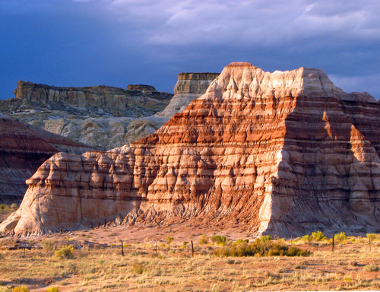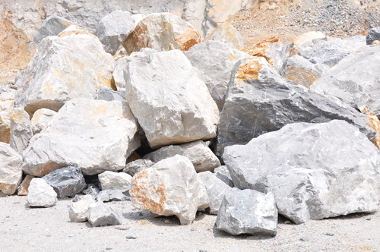At sedimentary rocks they are natural formations resulting from the consolidation of fragments of other rocks (called sediments) or the precipitation of saline minerals dissolved in aquatic environments. In general, this type of rock is less hard than the others and of more recent geological formation, although its presence is an indication that the local relief is old.
Due to the actions of weathering, there is a natural erosion of preexisting rocks, which makes them transform into countless sediments. An example is the sea water that, after colliding with the coastal rocks, slowly wears them away, giving rise to beach sand. Thus, sediments from these eroded rocks are transported by water and wind to other areas, usually the ocean floor, where they are deposited.
After the deposit of these rock particles, there is slowly accumulation due to the superposition of several layers of sediments at the bottom of the oceans, increasing the weight and pressure on the lower layers, giving rise to a process called
diagenesis or lithification. In this process, the sediments unite and consolidate, giving rise to sedimentary rocks.As this is an uninterrupted occurrence, new and new layers of sedimentary rocks are being formed on the soils superimposed on each other. For this reason, in the areas where these rock formations are concentrated - called by sedimentary basins – the organization of its layers, also called extracts, is remarkable.

Areas formed by sedimentary rocks tend to be structured in layers (extracts)
As these rocks almost always form at the bottom of the oceans, where the pressure is greater, they are only found in continental areas due to the movement of tectonic plates, which slowly displaces the continents over time. of the geological ages. Such an occurrence can also manifest itself in river areas.
Another notable origin of sedimentary rocks is the chemical one, when saline minerals originated by the chemical weathering mix in the water and subsequently precipitate, forming rocks such as calcite, dolomite and others.
There are also organic processes in rock formation, when animal remains accumulate in high pressure environment, causing these remains to solidify as happens with the sediments. Thus, rocks such as limestone appear.

Limestone, rock of organic origin used in the manufacture of gypsum, fertilizer and other materials
Based on these different origins, we have the classification of sedimentary rocks. Those of sedimentary origin are called clastic rocks; those of chemical and mineral origin are called chemical rocks; and those from animal remains are called organic rocks.
The formation process of sedimentary rocks, especially clastic rocks, can help in the decomposition of debris organic, which can liquefy, turning into fossil fuels, such as oil and coal mineral. In addition, it is possible to form fossilized plant and animal remains in areas of sedimentary basins.
By Me. Rodolfo Alves Pena
Source: Brazil School - https://brasilescola.uol.com.br/geografia/rochas-sedimentares.htm
